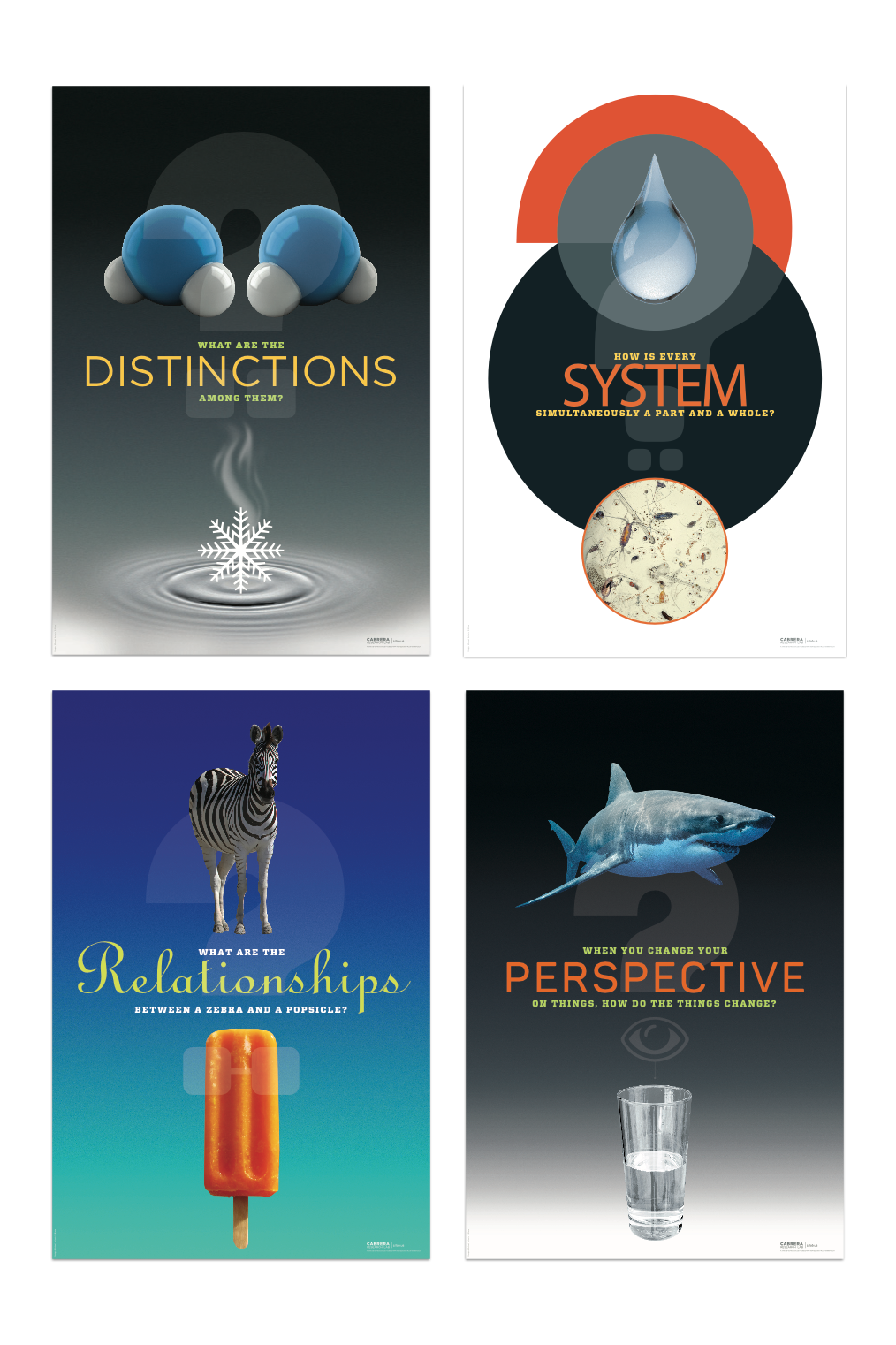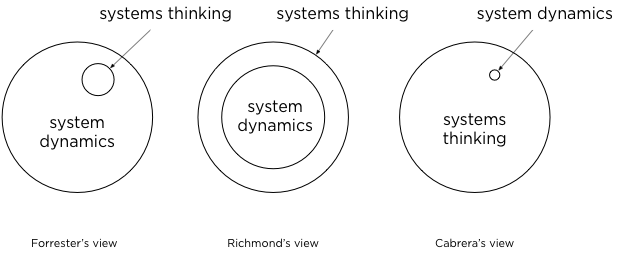19 Specific Things Systems Thinkers Do
In our research with K-12, undergraduate, graduate students, and the general public over the last decade, a number of patterns emerge that show us the specific things systems thinkers do. (We wrote another post on the Top 10 general things systems thinkers do here.) The truth is, the four patterns of thought that underlie systems thinking can mix, match, and combine in thousands of different ways. But in our research into public understanding of systems thinking and metacognition, we see these 19 specific actions emerge time and again. We know of many more "common structures" but these seem to be the ones we see repeatedly no matter the topic or context. Below we provide a brief intro for those new to DSRP patterns. The 19 things systems thinkers do are numbered toward the bottom.
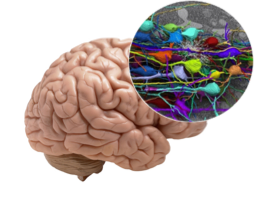
This is your brain
3 lbs.
100 billion neurons (100,000,000,000)
100 quadrillion connections (100,000,000,000,000,000)
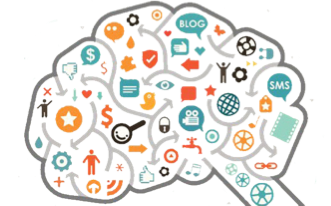
It structures stuff.
It processes information.
Doesn’t matter what information.
Everything on Google.
Everything in books.
Everything people say or do.
Everything around us is information.
The great thing about your brain is it does not care what stuff it processes. Any stuff you give it, it will process. By process, we mean give that stuff some structure. Organize it. Because when your brain structures stuff it transforms that information into useable knowledge.
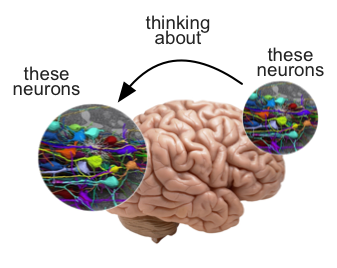
Neurons looking at neurons: metacognition
Another word for structuring information is “thinking;” a sciencey word is cognition. Another fancy word is metacognition, which means “thinking about your thinking.” Metacognition means knowing the various ways your brain structures or builds stuff.

The Building Blocks of Metacognition & Systems Thinking: Distinctions, Systems, Relationships, Perspectives (DSRP)
Our mind structures informational stuff in four ways. The mind makes distinctions between things or ideas, organizes things or ideas into part-whole groups, relates ideas and things, and looks at ideas or things from different perspectives. Even though the four patterns are very simple, the brain is very complex so it can do these four things simultaneously and mix and match them to create amazing patterns of thought.The following are excerpts from the book Systems Thinking Made Simple: New Hope for Solving Wicked Problems.[1]
-
☯ Distinctions (identity-other) Making distinctions between and among ideas. How we draw or define the boundaries of an idea or a system of ideas is an essential aspect of understanding them. Whenever we draw a boundary to define a thing, that same boundary defines what is not the thing (the “other”). Any boundary we make is a distinction between two fundamentally important elements: the thing (what is inside), and the other (what is outside). When we understand that all thoughts are bounded (comprised of distinct boundaries) we become aware that we focus on one thing at the expense of other things. Distinction-making simplifies our thinking, yet it also introduces biases that may go unchecked when the thinker is unaware. It is distinction-making that allows us to retrieve a coffee mug when asked, but it is also distinction-making that creates "us/them" concepts that lead to closed-mindedness, alienation, and even violence.
-
◴ Systems (part-whole) Organizing ideas into systems of parts and wholes. Every thing or idea is a system because it contains parts. Every book contains paragraphs that contain words with letters, and letters are made up of ink strokes which are comprised of pixels made up of atoms. To construct or deconstruct meaning is to organize different ideas into part-whole configurations. A change in the way the ideas are organized leads to a change in meaning itself. Every system can become a part of some larger system. The process of thinking means that we must draw a distinction where we stop zooming in or zooming out. The act of thinking is defined by splitting things up or lumping them together. Nothing exists in isolation, but in systems of context. We can study the parts separated from the whole or the whole generalized from the parts, but in order to gain understanding of any system, we must do both in the end.
-
🔄 Relationships (action-reaction) Identifying relationships between and among ideas. We cannot understand much about any thing or idea, or system of things or ideas, without understanding the relationships between or among the ideas or systems. There are many important types of relationships: causal, correlation, feedback, inputs/outputs, influence, direct/indirect, etc. At the most fundamental level though, all types of relationships require that we consider two underlying elements: action and reaction, or the mutual effects of two or more things. Gaining an awareness of the numerous interrelationships around us forms an ecological ethos that connects us in an infinite network of interactions. Action-reaction relationships are not merely important to understanding physical systems, but are an essential metacognitive trait for understanding human social dynamics and the essential interplay between our thoughts (cognition), feelings (emotion), and motivations (conation).
-
👁 Perspectives (point-view) Looking at ideas from different perspectives. When we draw the boundaries of a system, or distinguish one relationship from another, we are always doing so from a particular perspective. Sometimes these perspectives are so basic and so unconscious we are unaware of them, but they are always there. If we think about perspectives in a fundamental way, we can see that they are made up of two related elements: a point from which we are viewing and the thing or things that are in view.
Using just these four universal rules or structures, we can do quite a bit more than one might think. Here are 19 very specific things we have seen in our research that systems thinkers do to change and improve their thinking. First, there are just the basics of using each one. We call these "atomic structures" because they are elemental or irreducible (we call them this mostly because that's what the field of folks who study concepts call them):
Atomic structures:
1 consciously using distinctions (identity-other) to challenge existing norms, labels, and definitions;
2 consciously using relationships (action-reaction) to show dynamical interactions between elements;
3 consciously using systems and subsystems (part-whole) to change the way things are organized; and
4 consciously taking perspectives (point-view) to constrain or expand one’s thinking or to rethink distinctions, relationships, and/or systems.
The next set of things systems thinkers do we call "molecular structures"[1:1] because, like molecules, they are comprised of simpler atomic structures that form composites.
Molecular structures:
5 distinguishing relationships (defining relationships as ideas or things rather than just noting connections between objects)
6 after distinguishing relationships, “zooming into them” by deconstructing them into part-whole systems (i.e., RDS, which means: relate two things, distinguish or identify the relationship, and systematize or recognize its parts as belonging to a system;);
7 seeing the organization of parts and the interrelationships between parts (i.e., “part parties”) in a novel way;
8 using relational channels or “R-channels” to compare the relationship between two wholes by comparing the relationships between their parts;
9 using feedback loops to understand the co-relational (action-reaction) nature of interactions;
10 moving beyond human or animal perspectives (i.e., “perspectives with eyes”) by taking conceptual perspectives (e.g., seeing a phenomenon from the perspective of human rights);
11 breaking down perspectives into sub-perspectives in order to avoid the homogenous perspective thinking error (i.e., assuming any group is characterized by a single perspective);
12 not merely making common distinctions but challenging the prevailing distinctions (definitions, labels, constructs) that are made in one’s field;
13 using the distinctions rule to recognize the “other” or challenge assumptions/biases (e.g., a water shortage might be thought of as “excessive population”);
14 considering wider contexts by asking “what is this a part of?” in order to look at how things fit into larger wholes than is the norm;
Finally, we sometimes refer to the "macro-structure" of systems thinking. These are the big picture type things people tend to do.
Macro structures:
15 factoring “mental models” into the discussion of things, thereby calling into question accepted constructs, then providing new constructs, and making explicit the evolving and approximate nature of mental models (versus the static permanence of facts);
16 contemplating the often invisible mental models that lead to visible behavior of actors or agents;
17 thinking about complex adaptive systems (CAS) and looking for micro-behaviors or rules followed by independent agents that collectively lead to large-scale emergent phenomena;
18 struggling through the intricacy of complex mental models to identify leverage points or to organize them in a new way that causes the models to be simpler and easier to comprehend;
19 Every complex topic or phenomenon is a massively relational, perspectival network where: (1) every edge (line indicating a relationship) could be a distinguished node (the object connected to a relationship); and (2) where every node: must be distinguished, could be a system in and of itself, could be a perspective (point or view), and could be related to or the relationship between other elements. Generally speaking, the novel patterns of systems thinking can be summarized as a hyper-distinctive, hyper-relational, hyper-hierarchical, and hyper-perspectival network.

Benefits of Building Knowledge with DSRP
The benefits of becoming metacognitive are extensive. It helps you learn more things more deeply (content mastery). Beyond that, metacognition (DSRP) is shown to increase IQ-type skills such as a growth mindset, problem solving, analytical ability, and smarts as well as EQ-type skills and prosocial skills like compassion and teamwork, as well as emotional intelligence such as interpersonal or intrapersonal (knowing oneself) awareness. With four patterns of systems thinking, you get IQ and EQ for free[1:2].
-
For a detailed analysis of the ethical implications of DSRP with reference to related works in systems thinking, see Cabrera, D, Cabrera, L, Powers, Erin. 2015. "A Unifying Theory of Systems Thinking with Psycho-Social Applications." Systems Research and Behavioral Science 32(5). ↩︎ ↩︎ ↩︎
.png?width=150&height=150&name=CRL%20GOAT%20Logo%20(4).png)
